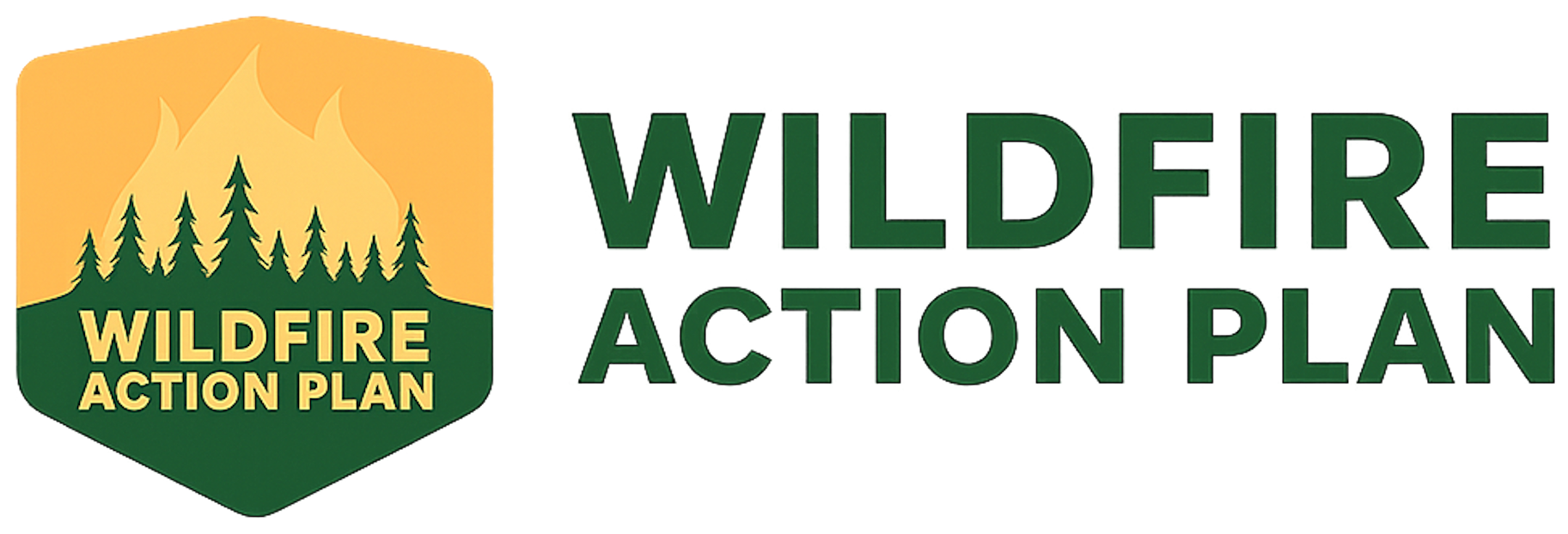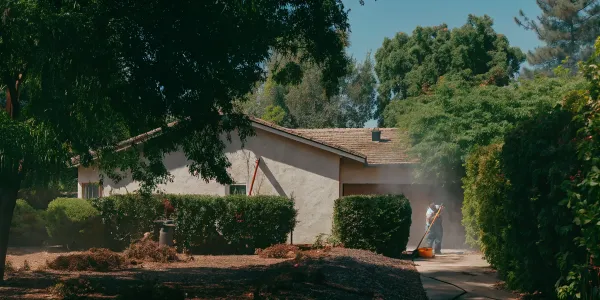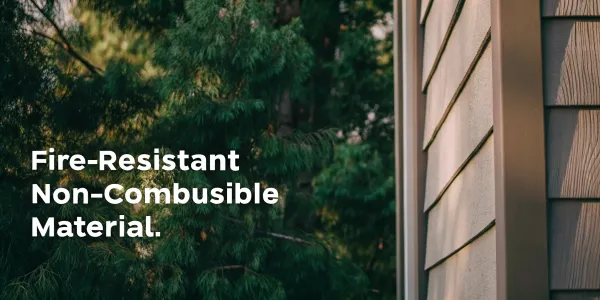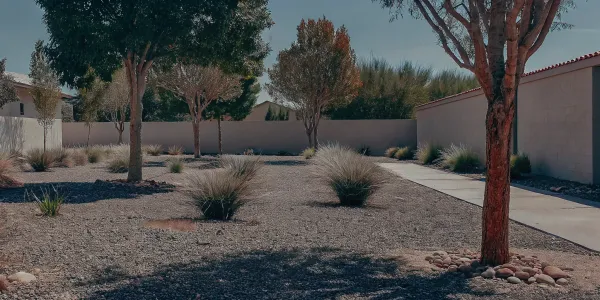Wildfire Preparedness Plan: A Step-by-Step Guide
Create a wildfire preparedness plan with clear, practical steps to protect your home, family, and insurance options before, during, and after a wildfire.
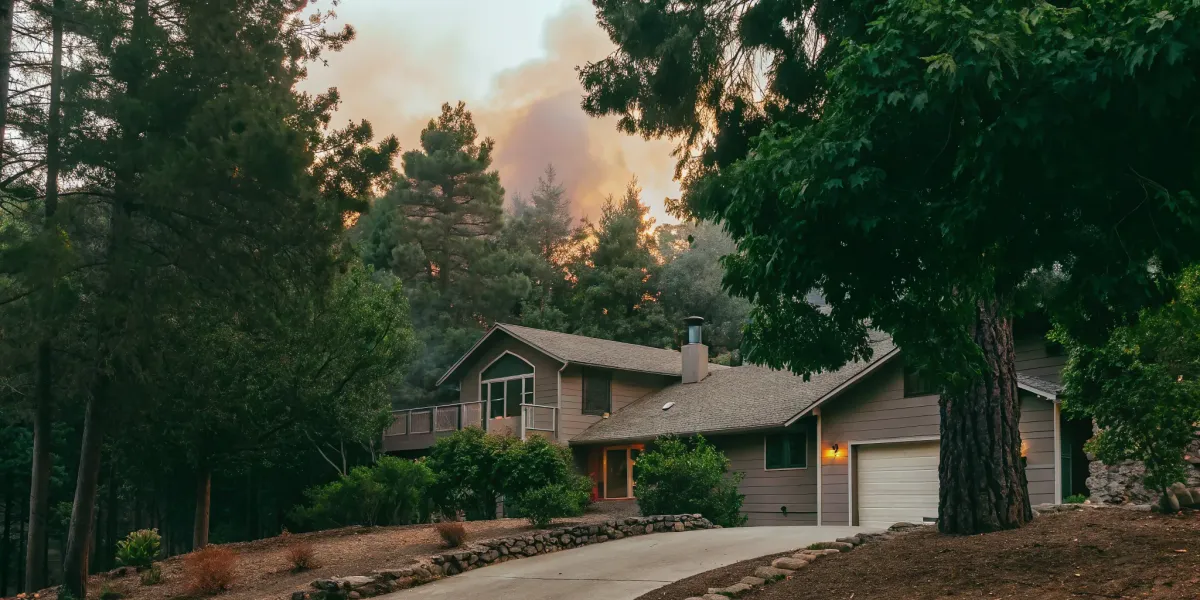
Many people believe that if a major wildfire is coming, there’s nothing they can do to save their home—that survival is just a matter of luck. This is simply not true. While no home is fireproof, research and post-fire assessments consistently show that homes with proactive preparation are far more likely to survive. The difference often comes down to a few key actions, and it all starts with a solid wildfire preparedness plan. This guide cuts through the noise and debunks the myths, focusing on the practical steps that give your home its best fighting chance against embers and flames.
Key Takeaways
- Create a written plan before you need one: Your family's safety depends on a clear, practiced evacuation strategy. A documented plan removes guesswork during a high-stress event, ensuring everyone knows where to go, what to bring, and how to stay in contact.
- Defend your home and prepare to leave: Your most effective actions are twofold. First, create defensible space and harden your home against embers to give it a fighting chance. Second, pack a "Go-Bag" with essentials so your family can evacuate safely at a moment’s notice.
- Proactive steps can help you stay insurable: Taking concrete actions like creating defensible space and documenting your preparedness plan demonstrates you are actively reducing your risk. In today's tough insurance market, this can be the key to keeping your coverage or finding an affordable policy.
Why a Wildfire Plan Is Your First Line of Defense
Feeling overwhelmed by the threat of wildfires and the chaos of the insurance market is completely understandable. It can feel like the problem is too big to solve. But the single most powerful thing you can do is take control of what you can. Creating a wildfire preparedness plan is your first and best line of defense. It’s a clear, actionable strategy that turns anxiety into action, helping you protect your family, your home, and your financial stability. A plan isn't just a document; it's the framework for every decision you'll make before, during, and after a fire.
Assess Your Wildfire Risk
Before you can protect your home, you need to understand its specific vulnerabilities. Wildfire risk isn’t just about living near a forest; it’s a combination of your location, the surrounding landscape, and your home’s construction materials. Start by learning the wildfire history in your area. Does your neighborhood have a history of fires? What are the primary types of vegetation that could act as fuel? Look at your own property with a critical eye. Is your home on a slope? Are there trees overhanging the roof? An honest assessment is the foundation of an effective plan, allowing you to focus your efforts where they’ll matter most.
Common Wildfire Myths, Debunked
One of the biggest barriers to preparedness is the feeling that it’s all out of your hands. Many people believe that if a major wildfire is coming, there’s nothing they can do to save their home. This is simply not true. Research shows that homes with good defensible space and hardened features are far more likely to survive. Another dangerous myth is that insurance will automatically cover a total rebuild. The reality is that many policies have coverage gaps, and in today's difficult market, simply maintaining your insurance is a major challenge. Don't let misconceptions lead to inaction.
How a Plan Impacts Your Home Insurance
In places like California, a documented wildfire plan is becoming essential for home insurance. With insurers pulling back from high-risk areas, you need to prove you’re a responsible homeowner who is actively reducing risk. A plan that includes home hardening and defensible space maintenance shows insurers you’re a better bet. Some companies are even starting to offer discounts for certified mitigation efforts. Having a clear, written plan can be a key factor in whether you get renewed, what your premium costs, or if you can find coverage outside of last-resort options like the FAIR Plan. It’s a tangible tool in your fight to stay insurable.
The Power of a Written Plan
When an evacuation order comes, stress and panic can make it impossible to think clearly. A written plan removes the guesswork. It’s a checklist that guides you and your family through the critical steps of what to pack, how to communicate, and where to go. According to CAL FIRE, having a plan that everyone in your household understands is crucial for staying organized and calm during an emergency. It ensures you don’t forget irreplaceable documents, medications, or pets in the rush to leave. This simple document can be the difference between a chaotic evacuation and an orderly, safe departure.
Create Your Family Emergency Plan
When a wildfire threatens, your focus narrows to one thing: getting your family to safety. In the stress of an evacuation, it’s easy to forget critical steps. A written, practiced family emergency plan is your roadmap through the chaos. It ensures everyone knows what to do, where to go, and how to connect when you’re separated. This isn’t just a document; it’s a shared understanding that keeps your family coordinated and safe when every second counts. Taking the time to build this plan now gives you control in a situation that can feel uncontrollable.
Gather Your Emergency Contacts
You can’t rely on your phone’s contact list during an emergency. Cell service can be spotty, and batteries die. Your first step is to create a physical list of key phone numbers. Include cell and landline numbers for family members, a designated out-of-state contact, your doctor, veterinarian, and insurance agent. Also, add local emergency services that aren’t 911, like your local fire department’s non-emergency line.
Keep a waterproof copy of this list in your home, your car, and in each family member’s “go-bag.” This simple piece of paper ensures you can reach the right people and start your recovery process, even if your digital devices fail.
Map Your Evacuation Routes & Meeting Spots
When an evacuation order is issued, your primary route may be congested or blocked by the fire itself. You need options. Identify at least two different escape routes from your neighborhood. Drive them with your family so everyone is familiar with the roads. Practice helps build muscle memory, which is crucial when you’re operating under pressure.
Next, designate two meeting spots. The first should be a safe location nearby, like a specific landmark or a friend’s house outside the immediate evacuation zone. The second should be farther away, such as a relative’s home or a public building in a neighboring town, in case you can’t return to the area for a while. Make sure everyone has the addresses saved and written down.
Set Up Your Communication Plan
During a local disaster, phone lines and cell towers often become overwhelmed, making it difficult to reach people nearby. It’s often easier to make a long-distance call than a local one. Because of this, your plan should designate one friend or relative who lives out of state as your family’s central point of contact.
After evacuating, every family member should call or text this person to report that they are safe. This person can then relay information to the rest of the family, preventing confusion and panicked calls. Also, create a family group text for sharing quick updates, but don’t rely on it as your only method of communication. This simple system keeps everyone informed and reduces anxiety.
Plan for Kids, Pets, and Unique Needs
A successful evacuation plan accounts for every member of your household, including the ones who need extra help. If you have children, talk to them about the plan in a calm, reassuring way so they understand what to do without feeling scared. For pets, prepare a separate emergency kit with food, water, medication, a leash, and a carrier. Confirm in advance which local shelters or hotels are pet-friendly.
For older adults or family members with disabilities or medical conditions, pack extra medication, medical supplies, and copies of prescriptions. Consider their mobility challenges when planning evacuation routes. Acknowledging these unique needs ahead of time ensures no one gets left behind.
Practice Your Plan (and Keep It Current)
A plan you never practice is just a piece of paper. To make it effective, you need to run drills with your entire family at least twice a year. Time yourselves to see how long it takes to get everyone and everything into the car and on the road. Practicing reveals gaps in your plan—like realizing your pet carrier is buried in the back of a closet.
Your life changes, and so should your plan. Review it every six months or whenever there’s a major life event, like a new baby or a move. Keeping your plan current is a critical part of preparedness. A tool like the Wildfire Action Plan can help you build and update a personalized strategy, turning your preparations into a living document that truly protects your family.
Protect Your Home from Wildfire
Your home is your sanctuary, but when you live in a wildfire-prone area, it’s also a structure that needs defending. Protecting your house isn’t just about saving a building; it’s about giving your family the best possible chance of having a home to return to. The steps you take to prepare your property can dramatically influence how it fares during a wildfire and can also play a huge role in keeping your home insurable. These actions focus on creating a buffer around your home and strengthening the structure itself against the biggest threat: embers. By tackling home hardening and defensible space, you can take control and build a powerful layer of defense. Many homeowners feel powerless in the face of increasing wildfire risk and a chaotic insurance market, but preparing your property is one of the most impactful things you can do. It sends a clear signal to insurers that you are actively managing your risk, which can be a critical factor in maintaining coverage. The following steps will walk you through the most important actions you can take, from clearing vegetation to sealing your home against ember intrusion. You can track all of these steps and more by starting your free Wildfire Action Plan today.
Create Defensible Space Around Your Home
Think of defensible space as a protective bubble around your house. It’s a buffer zone you create by clearing out flammable vegetation, which can slow or even stop a wildfire from reaching your home. According to the National Weather Service, you should clear brush and plants near your house to create a space that helps stop fire in its tracks. This area is typically divided into zones. The most critical is Zone 0, the first five feet around your foundation. This area should be completely free of anything flammable—that means no bark mulch, no dry leaves, and no flammable patio furniture. Further out, in Zones 1 and 2 (extending up to 100 feet), the goal is to thin out vegetation, remove dead material, and create space between trees to disrupt the fire’s path.
Harden Your Home Against Embers
It’s a common misconception that most homes burn down from direct contact with a massive wall of flames. The reality is far more subtle and insidious. As the National Interagency Fire Center points out, "most homes ignite during a wildfire as a result of embers or small flames." These wind-blown embers can travel a mile or more ahead of a fire, landing in gutters, under decks, or entering your home through vents. "Hardening" your home means sealing these vulnerabilities. Start by covering all vents with 1/8-inch metal mesh. Ensure your roof is a Class A fire-rated material and is kept clear of debris. Upgrading to dual-pane tempered glass windows can also prevent them from shattering in the heat, which would give embers a direct entry point.
Choose Fire-Resistant Landscaping
What you plant in your yard matters just as much as what you clear away. Your landscaping can either act as fuel for a fire or as a natural firebreak. The key is to choose plants that don't burn easily and to arrange them strategically. Fire-resistant plants, like succulents and native perennials, are great choices because they retain moisture and have a low fuel volume. Avoid plants with high oil or resin content, such as juniper, cypress, and pine. You should also use fire-safe materials for your hardscaping. Create walkways with gravel or pavers to break up continuous vegetation, and use non-combustible mulch like rock or decomposed granite in the critical five-foot zone around your home’s foundation.
Your Regular Maintenance Checklist
Wildfire preparedness isn’t a one-and-done project; it’s an ongoing commitment to maintaining your home’s defenses. A simple, regular maintenance routine can make all the difference when a fire threatens. At least twice a year, clean all leaves, pine needles, and other debris from your roof and gutters. Regularly walk your property to trim back vegetation and remove any dead plants or tree limbs within your defensible space zones. You should also store flammable items like firewood piles and propane tanks at least 30 feet away from your house. Inside, as CAL FIRE advises, "Have fire extinguishers in your home and teach everyone how to use them. Check them regularly" to ensure they are charged and accessible.
Work With Your Neighbors for Community Safety
A wildfire doesn’t respect property lines. Your home is only as safe as your neighborhood, which makes community collaboration essential. An unmanaged property next door can pose a significant risk to your own, no matter how well you’ve prepared. Start a conversation with your neighbors about creating a fire-safe community. You can work together to clear shared spaces, create a neighborhood phone tree for alerts, and learn about programs like Firewise USA® that provide a framework for organizing. By talking to your neighbors about your plan and encouraging them to prepare, you build a collective defense that makes everyone safer. After all, you’re all in this together.
Build Your "Go-Bag" and Emergency Kit
When an evacuation order is issued, you won’t have time to search for birth certificates or debate which snacks to pack. This is where a pre-packed "Go-Bag" and a more extensive at-home emergency kit become your most valuable assets. A Go-Bag is a portable kit you can grab instantly, containing absolute essentials for the first 72 hours. Your at-home kit is a larger supply to sustain your family if you're stuck at home without power or need to replenish your Go-Bag. Preparing these kits ahead of time removes panic from the equation, allowing you to focus on one thing: getting your family to safety. A clear, written checklist helps you organize this process so nothing gets missed, which is a core part of creating your Wildfire Action Plan.
Pack Copies of Important Documents
If you have to leave your home behind, the last thing you want to lose is the paperwork you need to rebuild your life. Your Go-Bag should contain copies of your most critical documents in a waterproof, portable container. This includes birth certificates, passports, social security cards, driver's licenses, and insurance policies. Don't forget property records like deeds or rental agreements. In addition to physical copies, create digital backups. Scan your documents and save them to a password-protected cloud service or a USB drive that you keep with your kit. This small step can save you immense stress and time during recovery.
Stock Enough Food and Water
During an emergency, access to clean water and food can become difficult. The American Red Cross recommends storing at least a three-day supply of non-perishable food and one gallon of water per person, per day. For your Go-Bag, choose lightweight, high-energy foods like protein bars, dried fruit, and nuts. For your at-home kit, you can store canned goods, rice, and pasta. Remember to include a manual can opener, utensils, and any special food items for infants, the elderly, or those with dietary restrictions. Don't forget about your pets—pack their food and extra water, too.
Assemble Your First-Aid and Medical Supplies
A well-stocked first-aid kit is non-negotiable. You can buy a pre-made kit, but it’s best to customize it with your family’s specific needs in mind. Include essentials like bandages, sterile gauze, antiseptic wipes, pain relievers, and any allergy medications. Most importantly, pack at least a seven-day supply of any prescription medications. Keep a written list of all medications, their dosages, and the prescribing doctor’s information. If you wear glasses or contacts, pack an extra pair. Having these medical supplies on hand can be critical if you are displaced from your home for several days and can't get to a pharmacy.
Include Power and Communication Tools
When a wildfire strikes, power outages and overwhelmed cell networks are common. Your emergency kit should help you stay connected and informed. Pack a portable power bank to keep your cell phone charged. However, don't rely on your phone alone. A battery-powered or hand-crank radio is one of the most reliable tools for receiving emergency broadcasts and updates from local authorities. Include extra batteries for all your devices, a flashlight or headlamp for each family member, and a whistle to signal for help. A physical copy of your emergency contacts is also a smart backup.
Get Your Finances Ready
Financial preparedness can significantly ease your path to recovery after a disaster. Before an emergency, it's wise to review your insurance policies to ensure you have enough coverage for your home and belongings. For your Go-Bag, include some cash in small bills, as ATMs and credit card machines may not be working during a power outage. It’s also a good idea to have copies of the front and back of your credit cards and bank account information. Having these resources readily available will help you cover immediate expenses like lodging, food, and fuel if you need to evacuate.
What to Do When a Wildfire Threatens
When a wildfire is near, the situation can change in an instant. All your preparation is designed for these critical moments, helping you move with purpose instead of panic. The key is to stay informed, act decisively, and prioritize the safety of your family above all else. Your Wildfire Action Plan is your roadmap, guiding you through the essential steps of evacuating safely and efficiently. Follow official instructions, trust your plan, and focus on what matters most.
Understand Local Emergency Alerts
When a fire is approaching, reliable information is your most valuable asset. It’s crucial to know how your local authorities will communicate with you. This often includes Wireless Emergency Alerts (WEAs) sent to your phone, local news broadcasts, and social media updates from your county’s emergency services or sheriff’s department. It’s also smart to learn what different NWS watches and warnings mean so you can grasp the seriousness of a threat. An Evacuation Warning means be ready to go at a moment’s notice. An Evacuation Order means a serious threat to life and property is imminent, and you need to leave immediately. Don’t wait—when the order comes, it’s time to go.
Remember the "6 P's" of Evacuation
In a high-stress situation, it’s easy to forget something vital. That’s where the "6 P's" come in. This simple memory aid helps you focus on the irreplaceable items you need to grab if you have to leave in a hurry. Think of it as your absolute bare-minimum checklist for what to take with you.
The six P's of evacuation are:
- People and Pets: Account for everyone in your household, including your animals.
- Papers: Grab your important documents, like passports, birth certificates, and insurance policies.
- Prescriptions: Pack medications, eyeglasses, and any other essential medical supplies.
- Pictures: Take irreplaceable photos and videos.
- Personal Computers: Your laptops and hard drives contain important files and memories.
- Plastic: Don't forget your credit cards, debit cards, and some cash.
Your Step-by-Step Evacuation Checklist
If you have time before you evacuate, taking a few extra minutes to secure your home can make a difference. Your personal safety always comes first, so only complete these steps if you can do so without delaying your departure.
- Close all windows, vents, and doors to prevent embers from entering.
- Shut off the gas at the meter and turn off pilot lights.
- Move flammable furniture, curtains, and other items away from windows and doors.
- Turn on your lights inside and outside the house. This helps firefighters see your home through thick smoke.
- Leave your doors unlocked to give firefighters easy access if needed.
- Connect garden hoses to outside spigots so firefighters have ready access to water.
How to Find a Safe Route Out
Your primary escape route might not be available during a wildfire. Roads can close quickly due to fire, smoke, or emergency vehicle traffic. That’s why your emergency plan must include at least two different ways to leave your neighborhood. You should know several ways to leave your home and practice driving them with your family. During an active fire, pay close attention to instructions from law enforcement and emergency responders. They will direct you to the safest, most current evacuation routes. Check your local emergency services website or social media for real-time road closure information before you leave. Always follow the designated paths, even if it seems like a longer way around.
Know When It's Safe to Return Home
The desire to go home after an evacuation is strong, but returning before officials give the all-clear is incredibly dangerous. Even if the flames are gone, significant hazards remain, including hotspots that can reignite, downed power lines, and structurally unsound trees or buildings. Emergency crews need space to continue their work safely. Please be patient and only return home when officials say it is safe. Monitor local news and official government channels for re-entry instructions. Following this guidance protects both you and the first responders working in the area.
Related Articles
- Protect Your Home: Top 10 Wildfire Prevention Measures
- What to Put in a Wildfire Go Bag: The Ultimate Guide
- A Step-by-Step Home Wildfire Risk Assessment
- How to Build an Emergency Kit for Wildfire
- Wildfire Season: Why It's Now a Year-Round Threat
Frequently Asked Questions
This all sounds overwhelming. What's the first thing I should do? It's completely normal to feel that way. The most effective first step is to simply walk your property with a critical eye. Start with the area right against your foundation—the first five feet. Is there anything flammable there, like mulch or dry leaves? Clearing that small zone is a powerful, manageable action you can take today. From there, you can move on to creating a written family evacuation plan. Breaking it down into small, specific tasks makes the process feel much more achievable.
Will preparing my home guarantee my insurance company will cover me? While there are no guarantees in the current insurance market, taking these steps is the single best way to improve your chances. A well-maintained property with clear defensible space and home hardening features shows an insurer that you are actively reducing your risk. This can be a deciding factor in getting your policy renewed, finding a new carrier, or even qualifying for discounts. Think of it as building the strongest possible case for why your home is a good risk to cover.
What's the real difference between 'home hardening' and 'defensible space'? It's helpful to think of it this way: defensible space is about managing your yard, while home hardening is about strengthening your house itself. Defensible space involves clearing flammable vegetation to create a buffer that slows a fire's approach. Home hardening focuses on sealing the small gaps where wind-blown embers can get in, like covering vents with metal mesh or ensuring you have a fire-resistant roof. Both are critical, as embers are the primary threat to most homes.
How much time and money does this really take? The investment varies widely. Many of the most important tasks are free and only require your time, such as regularly cleaning your gutters, raking leaves, and creating a family communication plan. Other projects, like replacing windows or installing a Class A roof, are significant financial investments. The key is to not let the big projects stop you from starting with the free ones. Every single step you take improves your home's defense.
My neighbors aren't doing anything to prepare. Does my effort even matter? Yes, it absolutely matters. While a fire-safe community is the ideal, your individual efforts can dramatically increase your home's chance of survival. The condition of the area immediately surrounding your house—that first five feet—is the most critical factor, and that's entirely within your control. By creating defensible space and hardening your home, you build a powerful defense that can protect your property even if your neighbor's is unprepared.
